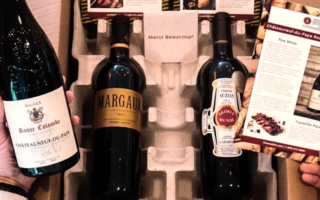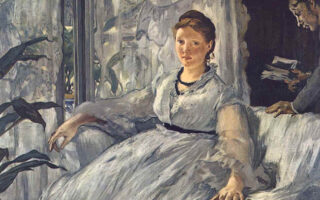Oswald Revisited
1007
The 40th anniversary of John F. Kennedy’s assassination is upon us and so is the resurgence of all the conspiracy theories about who really killed him and why. In the circumstances; perhaps some in the family might be interested in a few personal recollections that may help to shed some light on the matter.
I don’t have a definite answer. Probably no one ever will. But I am convinced that Lee Harvey Oswald did it, acting alone for his own reasons. And I have some basis for that judgment.
By one of those quirks of history, I was the first ever journalist and one of less than a handful who ever had the chance to talk with Oswald,
It was in the summer of 1959, four years before the fateful shooting. I was, at the time, a correspondent for the American news agency United Press International (UPI) in Moscow, and a friend in the consular section of the American embassy, during a chance meeting in the hallway there, alerted me to the fact that a young male American had come to his office that morning to renounce his American citizenship in order to become a citizen of the Soviet Union.
Oswald was no one special, not a high-level anything. In 1959, however, no one did that kind of thing. Had he been a butcher or a baker or a candlestick maker, such a gesture automatically qualified as news, not earth-shaking news but certainly a story worth writing.
My embassy friend gave me the name of the hotel where the young man was staying and I hurried over and knocked on his door.
Oswald opened it a bit but with a chain-lock on that kept me from entering. I explained that I wanted to interview him but he said he didn’t want to talk to reporters and wouldn’t let me in. I argued with him for about 10 minutes with my foot in the crack in the door like a persistent encyclopedia salesman. But I was unable to change his mind.
Finally I gave up, went back to the Agency office and asked my colleague, Aline Mosby, to call Oswald in the hope that, if he wouldn’t talk to me, he might be more willing to talk to a woman reporter. And so he was.
Aline went to the hotel, interviewed him at length, took his picture and then came back to the office to write the story. First she compared her impressions with mine. Like me, she had found Oswald to be stubborn, determined to go ahead with his plan and desirous of making it a flamboyant gesture. At one point he simply sat with his arms folded across his chest and told Aline that she or anyone could try as much as they wished but no one was going to change his mind.
We analyzed him as best we could for a long time, finally agreeing that no one appeared to be masterminding him and that he simply had gotten this idea in his head for his own reasons. They were enough for him even if inexplicable to anyone else. She wrote the story that way.
After Aline filed her copy, another American woman correspondent, Priscilla Johnson, who worked for the North American Newspaper Alliance, also picked up Oswald’s track and he agreed to talk at great length to her. But since she mailed her stories and didn’t send them by cable, she represented no journalistically competitive challenge to Aline and me.
Eventually, after Aline’s story appeared, a fourth journalist, the correspondent from the rival American news agency, the Associated Press, hunted Oswald down in the hotel but, perhaps because he also was a man, he got virtually the same kind of treatment Oswald had given me.
Very shortly afterward, the Soviet authorities gave Oswald permission to stay in the Soviet Union and whisked him out of sight. That was the end of his contact with the American press corps in Moscow.
He was sent to the city of Minsk in Byelorussia where he lived quietly, out of the eye of the press and acquired a Russian wife, Marina. But Oswald was not a man easily contented. Some years later he had had his fill of the Soviet Union and discretely contacted the American embassy to see if he could return to the United States. The embassy arranged that but handled the matter very secretively. He was out of the country and back home before anyone in the American press corps was aware of it.
In November of 1963, however, the day Kennedy was assassinated, Christine and I were in Cambridge, Massachusetts where I had been awarded a year’s journalistic fellowship at Harvard. By another quirk of fate, we had invited Oswald’s other Moscow interviewer, Priscilla Johnson, who also was living then in Cambridge, to dine with us that evening in our small student apartment.
Before Priscilla’s arrival, however, the first news of the shooting in Dallas had begun to dominate the television news but without any identification of the suspected killer. Little by little the stories started to talk of a suspect named Lee Oswald but without further information about him, and I became increasingly convinced that the man in question might well be the same Lee Harvey Oswald who had defected to the Soviet Union in 1959.
Although I was on a sabbatical leave of absence from UPI, I quickly called their Boston bureau to advise them to check on that possibility. After a long explanation about why I was calling and what my connection with the news agency was, the Boston bureau finally agreed to run down the matter. Or so I thought.
My certainty that I was right was growing with every passing minute. But long minutes were going by and nothing on the news was indicating a link to the Lee Harvey Oswald I’d met in Moscow.
Finally I called…
- SUBSCRIBE
- ALREADY SUBSCRIBED?
BECOME A BONJOUR PARIS MEMBER
Gain full access to our collection of over 5,000 articles and bring the City of Light into your life. Just 60 USD per year.
Find out why you should become a member here.
Sign in
Fill in your credentials below.
The 40th anniversary of John F. Kennedy’s assassination is upon us and so is the resurgence of all the conspiracy theories about who really killed him and why.
In the circumstances; perhaps some in the family might be interested in a few personal recollections that may help to shed some light on the matter.
In the circumstances; perhaps some in the family might be interested in a few personal recollections that may help to shed some light on the matter.
I don’t have a definite answer. Probably no one ever will. But I am convinced that Lee Harvey Oswald did it, acting alone for his own reasons. And I have some basis for that judgment.
By one of those quirks of history, I was the first ever journalist and one of less than a handful who ever had the chance to talk with Oswald,
It was in the summer of 1959, four years before the fateful shooting. I was, at the time, a correspondent for the American news agency United Press International (UPI) in Moscow, and a friend in the consular section of the American embassy, during a chance meeting in the hallway there, alerted me to the fact that a young male American had come to his office that morning to renounce his American citizenship in order to become a citizen of the Soviet Union.
Oswald was no one special, not a high-level anything. In 1959, however, no one did that kind of thing. Had he been a butcher or a baker or a candlestick maker, such a gesture automatically qualified as news, not earth-shaking news but certainly a story worth writing.
My embassy friend gave me the name of the hotel where the young man was staying and I hurried over and knocked on his door.
Oswald opened it a bit but with a chain-lock on that kept me from entering. I explained that I wanted to interview him but he said he didn’t want to talk to reporters and wouldn’t let me in. I argued with him for about 10 minutes with my foot in the crack in the door like a persistent encyclopedia salesman. But I was unable to change his mind.
Finally I gave up, went back to the Agency office and asked my colleague, Aline Mosby, to call Oswald in the hope that, if he wouldn’t talk to me, he might be more willing to talk to a woman reporter. And so he was.
Aline went to the hotel, interviewed him at length, took his picture and then came back to the office to write the story. First she compared her impressions with mine. Like me, she had found Oswald to be stubborn, determined to go ahead with his plan and desirous of making it a flamboyant gesture. At one point he simply sat with his arms folded across his chest and told Aline that she or anyone could try as much as they wished but no one was going to change his mind.
We analyzed him as best we could for a long time, finally agreeing that no one appeared to be masterminding him and that he simply had gotten this idea in his head for his own reasons. They were enough for him even if inexplicable to anyone else. She wrote the story that way.
After Aline filed her copy, another American woman correspondent, Priscilla Johnson, who worked for the North American Newspaper Alliance, also picked up Oswald’s track and he agreed to talk at great length to her. But since she mailed her stories and didn’t send them by cable, she represented no journalistically competitive challenge to Aline and me.
Eventually, after Aline’s story appeared, a fourth journalist, the correspondent from the rival American news agency, the Associated Press, hunted Oswald down in the hotel but, perhaps because he also was a man, he got virtually the same kind of treatment Oswald had given me.
Very shortly afterward, the Soviet authorities gave Oswald permission to stay in the Soviet Union and whisked him out of sight. That was the end of his contact with the American press corps in Moscow.
He was sent to the city of Minsk in Byelorussia where he lived quietly, out of the eye of the press and acquired a Russian wife, Marina. But Oswald was not a man easily contented. Some years later he had had his fill of the Soviet Union and discretely contacted the American embassy to see if he could return to the United States. The embassy arranged that but handled the matter very secretively. He was out of the country and back home before anyone in the American press corps was aware of it.
In November of 1963, however, the day Kennedy was assassinated, Christine and I were in Cambridge, Massachusetts where I had been awarded a year’s journalistic fellowship at Harvard. By another quirk of fate, we had invited Oswald’s other Moscow interviewer, Priscilla Johnson, who also was living then in Cambridge, to dine with us that evening in our small student apartment.
Before Priscilla’s arrival, however, the first news of the shooting in Dallas had begun to dominate the television news but without any identification of the suspected killer. Little by little the stories started to talk of a suspect named Lee Oswald but without further information about him, and I became increasingly convinced that the man in question might well be the same Lee Harvey Oswald who had defected to the Soviet Union in 1959.
Although I was on a sabbatical leave of absence from UPI, I quickly called their Boston bureau to advise them to check on that possibility. After a long explanation about why I was calling and what my connection with the news agency was, the Boston bureau finally agreed to run down the matter. Or so I thought.
My certainty that I was right was growing with every passing minute. But long minutes were going by and nothing on the news was indicating a link to the Lee Harvey Oswald I’d met in Moscow.
Finally I called back the Agency in Boston to find out what they had done about my call. They were apologetic but not much. There were long lists of football and other sports scores to pass through on the teletype line and they were waiting until those were finished to forward my message by teletype to the United Press International main office in New York. It shouldn’t be much longer.
I slammed down the receiver, thought momentarily about shooting someone myself, then went back to the television where, fortunately, the link had been made. Someone in UPI’s photo archives, someone more alert than his colleagues in Boston, had turned up the photo of Oswald that Aline Mosby had taken in Moscow and it clinched his identification.
Of course, the assassination and a re-hash of our opinions about Oswald dominated our dinner with Priscilla Johnson who later, after Oswald himself was shot before he could be brought to trial, spent many months living in Texas with his widow, Marina.
From that stay she wrote a book, “Marina and Lee,” which essentially came to the same conclusion Aline and I had, namely that Oswald essentially was a loner. He didn’t need anyone to put him up to acting the way he did. He liked to make grandiose gestures and when he got an idea in his head by his own particular thought processes, it was there to stay.
Priscilla also was able, from her long talks with Marina, to add on the possibility that a jealous Oswald had shot Kennedy among other reasons because Marina kept pictures of the President around the house and more or less hero-worshiped him from afar.
For a number of years after the assassination, because I had met Oswald for those brief 10 minutes long, long ago, I kept getting bugged periodically by investigators from the Warren Commission set up to investigate the Presidential assassination as well as from various authors and researchers asking all kinds of detailed questions about him.
When he opened his hotel room door, did he do it with his right hand or his left hand? How tall was he? What color were his eyes? A lot of them were legitimate information gathering. A lot were desperate attempts to prove that Oswald wasn’t really the Kennedy killer.
On the other hand, Priscilla and I–and Aline, who, like me, eventually wound up living and working in Paris–actually had met Oswald and we all had no doubt that he was eminently capable of shooting the President for twisted reasons of his own. Nevertheless, I long ago stopped trying to argue with anyone about conspiracy theories. That’s an endless battle.
Maybe there was a conspiracy. Oswald had, after all, defected to the Soviet Union and had tried to go off to Fidel Castro’s Cuba. Maybe there was another shooter in addition to Oswald in Dallas on the fateful day. There are a lot of people who thought they saw one. Maybe the FBI, the CIA, the KGB, the Mafia, Castro himself, or even Lyndon Johnson, Kennedy’s successor in the White House, were involved. All those ideas have been and continue to be expressed.
But I haven’t seen any of the many conspiracy theories convincingly documented yet. Until I do, I’ll stick with what I know first hand–that I had met a guy who wouldn’t have needed any co-conspirators if he decided for his own reasons to try and kill the President.
—
An accredited member of the foreign press corps, Minnesota native Robert (Bud) Korengold first came to Europe in 1955 after serving in the Korean war. A Chevalier in the order of Tastevin in Burgundy, the recipient of a Presidential Award for Sustained Superior Accomplishment in the conduct of foreign policy, and a member of the order of Palmes Academiques and the order of Arts et Lettres, he lives in Normandy doing a bit of gardening and a bit of writing and a lot of amused reflection about life in France and with the French.
An accredited member of the foreign press corps, Minnesota native Robert (Bud) Korengold first came to Europe in 1955 after serving in the Korean war. A Chevalier in the order of Tastevin in Burgundy, the recipient of a Presidential Award for Sustained Superior Accomplishment in the conduct of foreign policy, and a member of the order of Palmes Academiques and the order of Arts et Lettres, he lives in Normandy doing a bit of gardening and a bit of writing and a lot of amused reflection about life in France and with the French.


